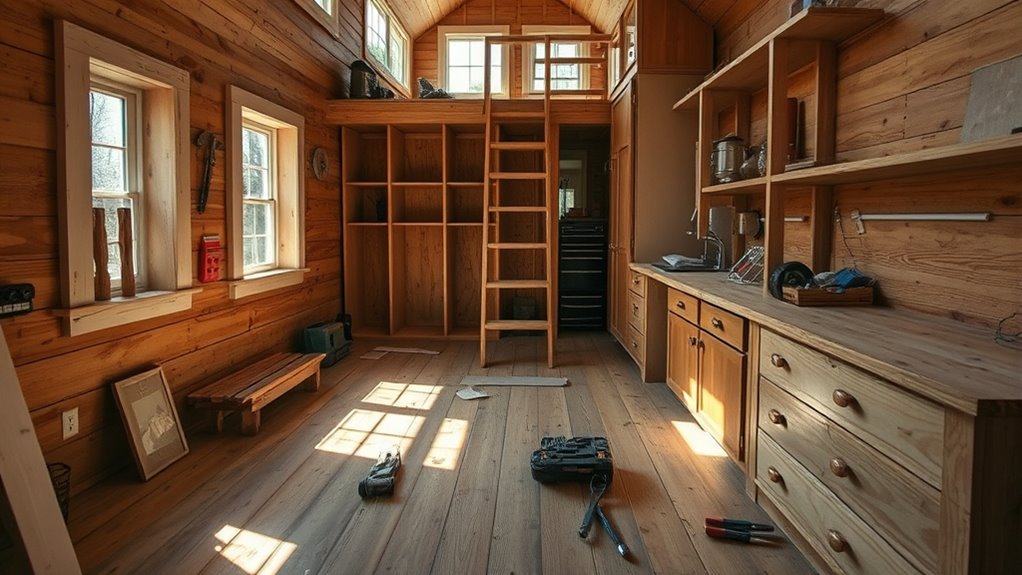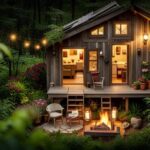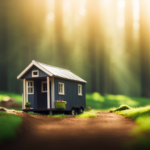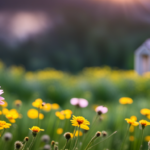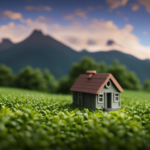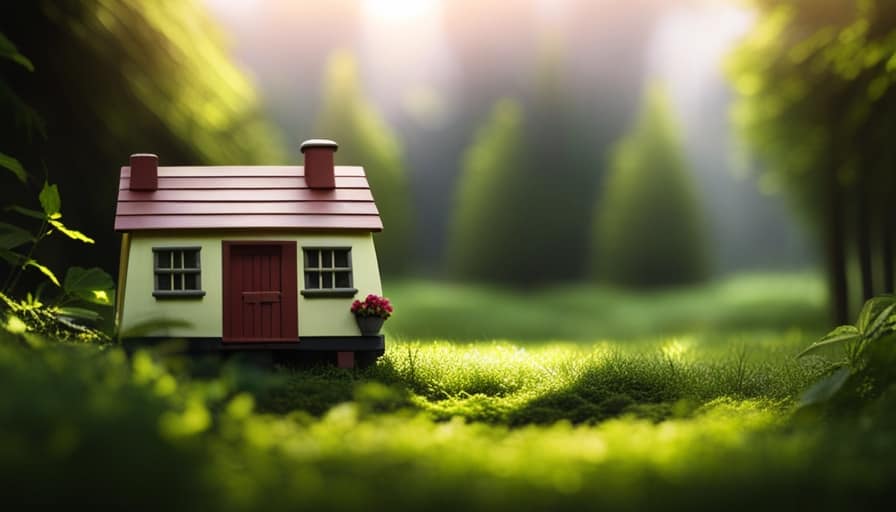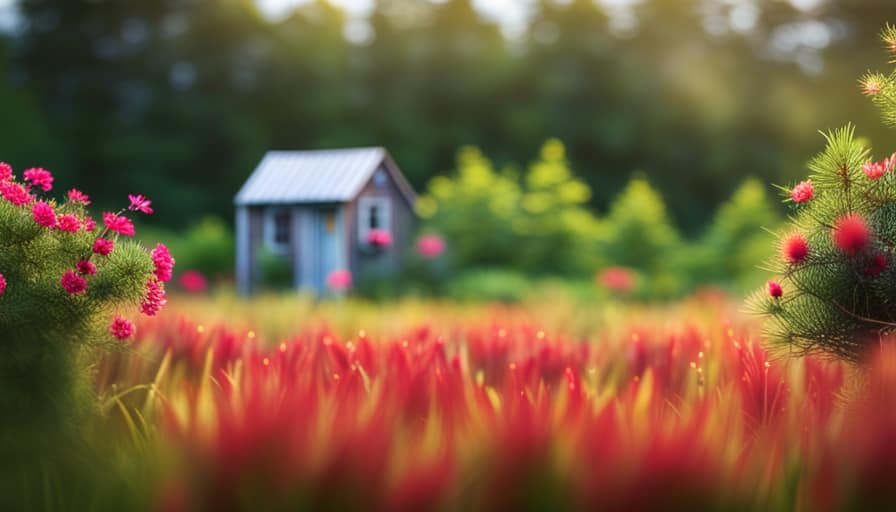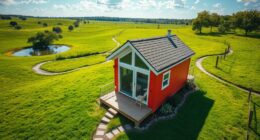Building a tiny house promises simplicity and savings, but the reality often hits differently. Hidden costs can quickly turn your project into a money pit, from surprise permit fees to unexpected repair expenses. Many overlook these expenses until it’s too late, leaving you caught off guard. Understanding these unseen financial pitfalls can mean the difference between a smooth build and a frustrating surprise. Curious about what might be lurking beneath the surface?
Key Takeaways
- Permitting and regulatory compliance can involve unexpected fees, delays, and restrictions that increase overall costs.
- Hidden repair and maintenance expenses often arise soon after move-in due to subpar materials or unforeseen issues.
- Foundation or trailer upgrades and site prep costs are frequently underestimated, adding significant expenses.
- Utility hook-ups and infrastructure extensions can be more complex and costly than initially anticipated.
- Custom interior finishes and features tend to inflate budgets due to higher-quality materials and specialized work.
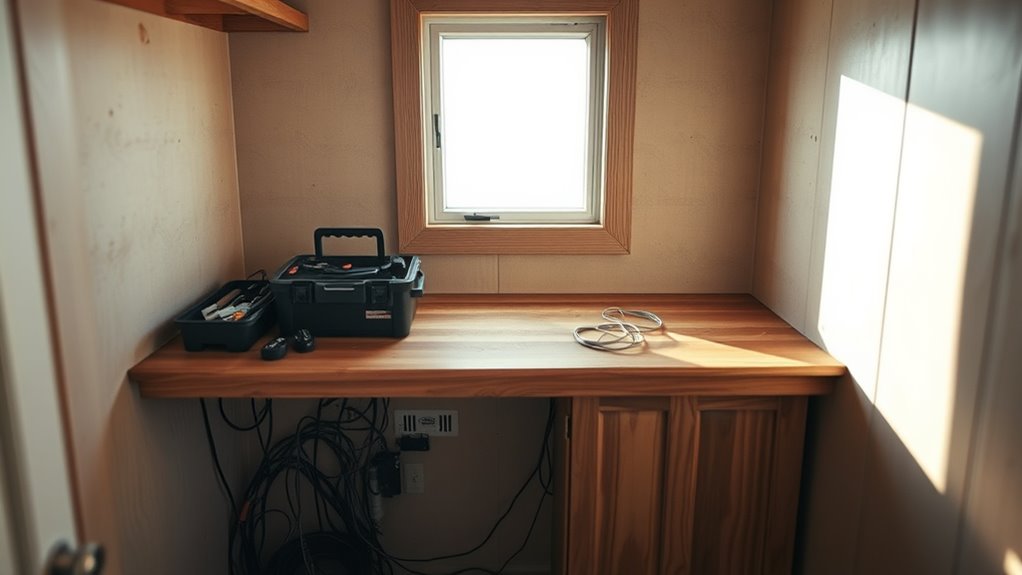
Building a tiny house might seem straightforward and budget-friendly at first, but there are often hidden costs that catch many by surprise. One major expense that many overlook is costly permits. Even though tiny houses are smaller, you still need to navigate local building codes and zoning laws. Securing the necessary permits can be expensive and time-consuming, especially if your plans don’t align neatly with existing regulations. Some jurisdictions have strict rules about where tiny houses can be placed, which can lead to unexpected fees or even delays. These costs can quickly add up, making what seemed like a budget project much more expensive.
Beyond permits, you should also be prepared for unexpected repairs. Tiny houses, despite their size, are still complex structures that require careful planning and quality materials. During construction, unforeseen issues often arise—damaged framing, plumbing leaks, or electrical problems that weren’t apparent at first glance. Once built, tiny houses are exposed to the same wear and tear as larger homes, meaning you may face repairs sooner than expected. For example, if the roof isn’t properly sealed or if insulation was improperly installed, you could end up with leaks or drafts that need fixing. These repairs can be costly, especially if you discover problems after moving in.
Another hidden expense comes from the foundation or wheels. If you’re building on a trailer, you might assume it’s simple, but upgrading or maintaining the trailer to meet safety standards can be pricier than anticipated. On the other hand, if you’re planning a fixed foundation, site preparation costs—such as leveling land or laying a concrete slab—can be substantial. Additionally, utility hook-ups often come with unexpected charges. Extending water, sewer, or electrical lines to your lot can be more complicated and expensive than initially estimated, especially if existing infrastructure isn’t nearby. Understanding cookie policies and potential privacy considerations can also impact your planning and costs.
Interior finishes and appliances also add to the total cost. While it’s tempting to go for budget options, cheap materials can sometimes lead to higher maintenance or replacement costs down the line. Quality fixtures, insulation, and appliances might cost more upfront but save you money over time. Plus, you might encounter hidden costs related to customizing your tiny house to meet your specific needs, such as built-in furniture or specialty windows.
In the end, building a tiny house isn’t just about the initial construction. It’s about planning for those hidden costs—permitting, repairs, utility hookups, and finishes—that can turn a seemingly affordable project into a financial challenge. Knowing these potential expenses upfront helps you avoid surprises and keeps your tiny house dream on track.
Conclusion
Building your tiny house is like charting a winding road—you might hit unexpected bumps along the way. By knowing these hidden costs upfront, you can steer clear of surprises and keep your dreams on track. Planning thoroughly is your best tool, ensuring each expense is accounted for, so your tiny house journey remains smooth sailing. With awareness and preparation, you’ll avoid surprises that pop up like weeds in a carefully tended garden.
Hi, I’m Emma. I’m the Editor in Chief of Tiny House 43, a blog all about tiny houses. While tree houses are often associated with childhood, they can be the perfect adult retreat. They offer a cozy space to relax and unwind, surrounded by nature. And since they’re typically built on stilts or raised platforms, they offer stunning views that traditional homes simply can’t match. If you’re looking for a unique and romantic getaway, a tree house tiny house might just be the perfect option.
